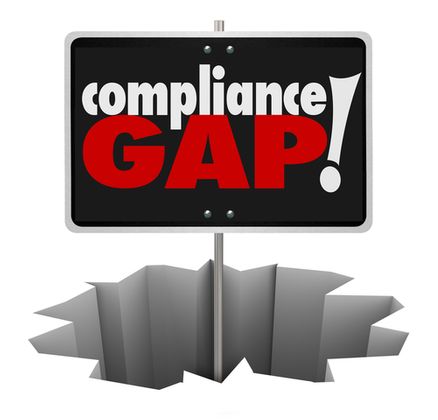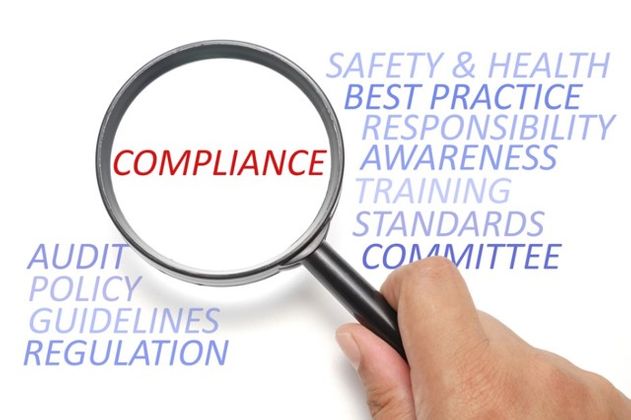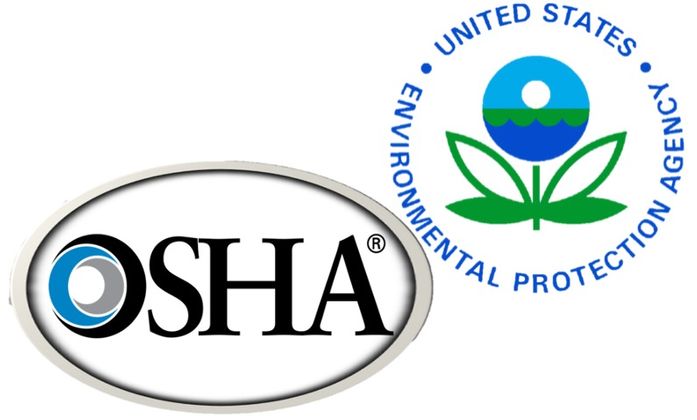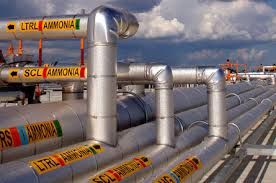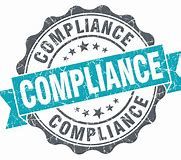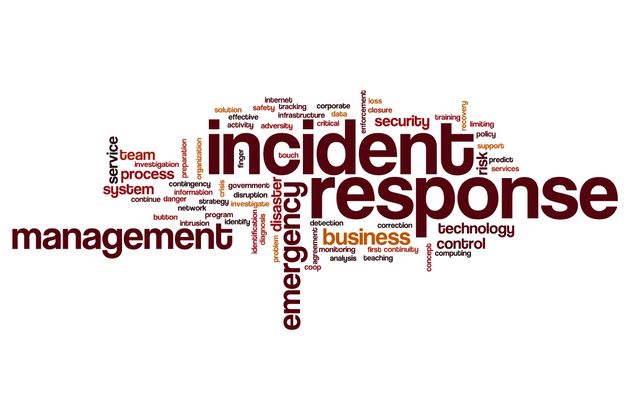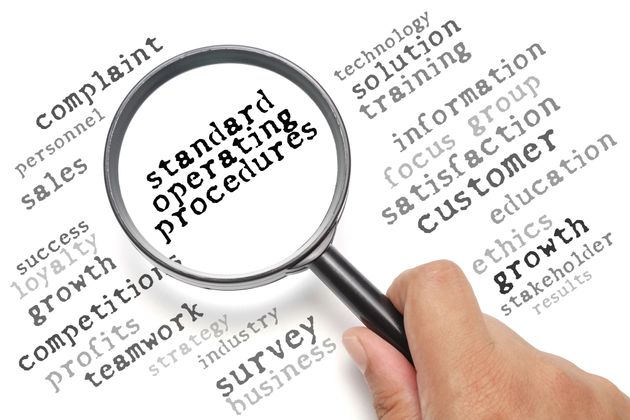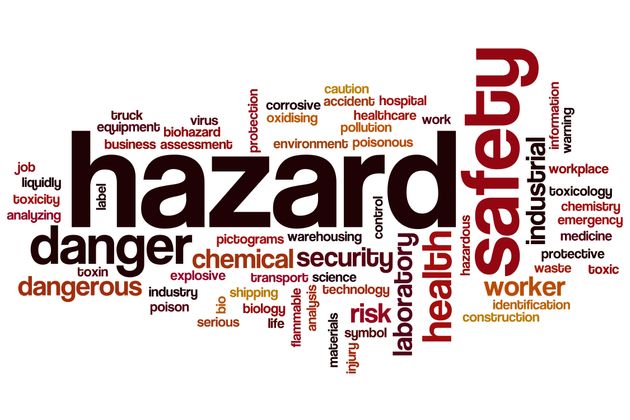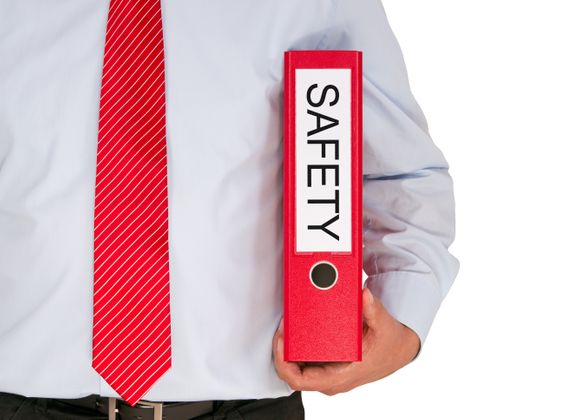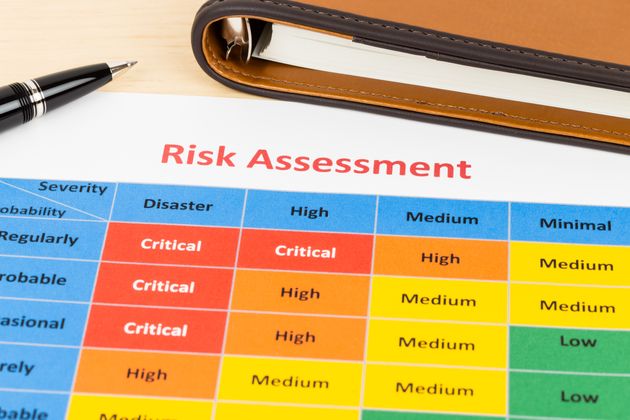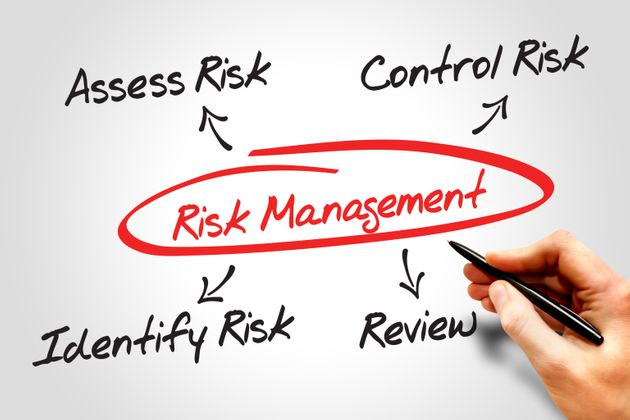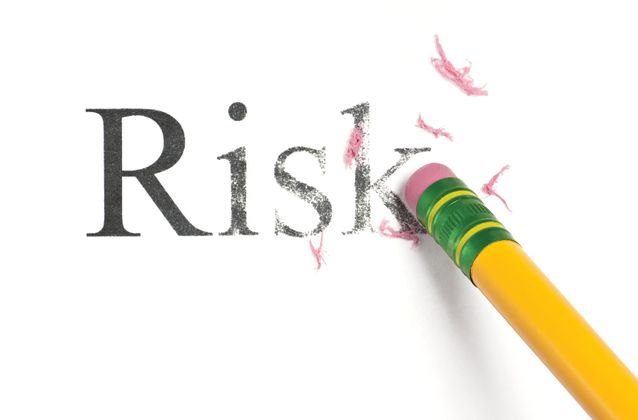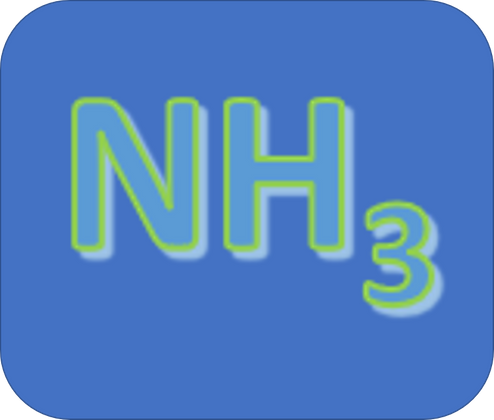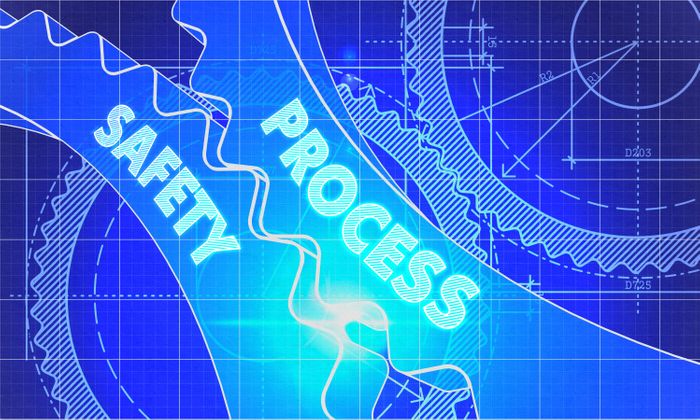Articles & Blogs
Keep up to date with our news, tips & tricks, and latest information!
Process Safety Red Flags
Amanda Murray
In any industry where complex processes and hazardous materials are involved, maintaining a high standard of process safety is essential. Process safety focuses on prevention through mitigation of potential causes that lead to consequences for catastrophic events. Accidents like chemical spills, explosions, or toxic releases can be devastating, and identifying the warning signs (or "red flags") early can prevent these events from happening. Recognizing and identifying these red flags is essential in managing process safety. While every operation carries its own risks, addressing these warning signs can prevent hazards from turning into accidents or catastrophic failures. Promoting a safety culture that has open communication between team members, maintaining equipment, and staying up to date on operator training and knowledge are key factors in maintaining a safe working environment for all involved. So, what are some of the red flags you should keep an eye out for?
→Addressing a change after it has taken effect or an Ineffective Management of Change Procedure
A significant red flag I’ve frequently encountered is facilities utilizing their Management of Change (MOC) procedures after the change has already occurred. This is problematic because it undermines the core purpose of the MOC procedure, which is to assess and mitigate risks before the change is made. The MOC process is designed to ensure that safety, operational, and environmental hazards are properly identified and managed. When changes are implemented without prior review, it increases the risk of unforeseen consequences, equipment failures, or unsafe conditions. Post-change MOC reviews put both employee safety and equipment integrity at risk, potentially leading to accidents, non-compliance, or catastrophic failures. If your management of change procedures is only a checklist, then your MOC program is mostly likely is not very robust.
moreCompliance Gap: How current is your Risk Management Plan?
Amanda Seifert
The Risk Management Plan (RMP) is a regulatory requirement enforced by the Environmental Protection Agency (EPA). Its goal is to prevent chemical accidents and reduce hazards by ensuring that facilities handling these hazardous substances are properly prepared. This preparation includes having accurate and up-to-date emergency response procedures, including having current emergency contact information for all personnel. Any change to the emergency contact must be updated within 30 days to comply with RMP regulations.
Updating a facilities RMP after personnel changes is easily overlooked but not having a current and accurate RMP can be dangerous during an emergency. Having outdated or incorrect emergency contact information can lead to delays in reaching personnel who need to be informed and involved in the response efforts. Accurate contact information also ensures that relevant employees and emergency responders can be quickly notified about the situation. Compliance with these RMP regulations is not just about avoiding fines; it's also about keeping the environment, employees, and community lives safe. Maintaining updated emergency contact information is a crucial aspect of RMP compliance and is typically the person that EPA will attempt to call for questions regarding the facilities RMP and related regulatory documentation. Failure to have the correct emergency contact information can have serious consequences, including:
moreStreamlining Compliance: Utilizing Software Applications for Your PSM Program
Amanda Seifert
Maintaining compliance with Process Safety Management (PSM) regulations is a critical part of ensuring operational safety and efficiency. Traditional methods for managing PSM programs often included time consuming paperwork, missing documentation and differing data sources, which can lead to inefficiencies, errors, and compliance gaps.
One of the key challenges in PSM compliance is the amount of documentation and data that is involved, including Process Safety Information (PSI), Operating Procedures, Maintenance Records, Incident Reports, and more. Managing these documents with binders or through various systems can be time-consuming and difficult to track. By utilizing a PSM software application, facilities can centralize all documentation and schedule audits and reminders in a single, secure location. This gives users easy access to up-to-date information and simplifies document requests during audits or inspections. In addition, features such as work order systems, action item tracking, and electronic signatures streamline the document management process and ensure facilities easily stay in compliance.
Compliance with PSM regulations involves numerous requirements and deadlines. Keeping track of these tasks through paperwork and binders can be overwhelming and can lead to oversights or missed deadlines, putting your facility at risk for regulatory fines or safety incidents. PSM software applications offer capabilities that help facilities stay on top of compliance regulations effortlessly. These applications can generate automated reminders for upcoming tasks, due dates, or inspections. Additionally, they allow facilities to generate reports on compliance status, incident investigations, audit findings, and action items with just a few clicks, saving time and resources during regulatory inspections or audits.
moreWhy your Contractor Safety Management Program Matters
Amanda Seifert
Contractors play a crucial role in many industries, but they can face challenges like financial constraints and tight deadlines. These pressures may lead to shortcuts or unsafe practices, posing risks to everyone involved. Working with third party companies can also expose employers to contractors who lack proper training and qualifications, further risking the safety of your employees.
Navigating contractor management can present various challenges. Strategies a contractor safety management program should generally involve three stages: establishing safety standards and pre-job qualifications, delivering consistent training for contractors, and monitoring and assessing contractor performance.
1. Establish Safety Standards and Pre-Job Qualifications for Contractors
Employers should define safety regulations and criteria, communicating these expectations to all employees. These rules can be displayed across work sites, offices, or employee documents. Clearly defining roles and responsibilities between employers and contractors is equally important. Once the safety regulations and criteria are set, a robust vetting process for contractors is essential. Utilizing tools like PSS Advantage can assist in streamlining the pre-job safety qualification process. Verifying contractor certifications and reviewing past records enhances the ability to maintain secure workplaces.
moreProperly Addressing PSM Findings and Recommendations
Amanda Seifert
Process Safety managers often face an overwhelming number of Findings and Recommendations from various PSM/RMP elements such as Process Hazard Analysis, Compliance Audits, and Incident Investigations.
Findings/Recommendations are considered "addressed" when it is either accepted and implemented, or when its implementation is justifiably delayed while ensuring safe operation. The most frequent issues when addressing Findings/Recommendations are as follows:
- Not responding to the Finding/Recommendation.
- Failing to document the follow up to a Finding/Recommendation, even if it has been addressed.
- Losing track of the Finding/Recommendation.
PSM findings and recommendations play a crucial role in identifying areas for improvement and preventing incidents. However, it's essential to address these findings effectively to ensure the safety and integrity of the processes. Now let’s talk about how you can avoid these common issues.
- Understand the Recommendation:
Take the time to review the findings and recommendations carefully. Ensure that you understand the underlying issues and their potential impact on process safety. If any aspects are unclear, seek clarification from those who conducted the assessment or those familiar with the findings.
moreKeeping Your Workplace Safe: OSHA Announces National Emphasis Program to Reduce Workplace Falls
Amanda Seifert
On May 1, 2023, the U.S. Department of Labor has made an announcement regarding the initiation of a National Emphasis Program (NEP) by the Occupational Safety and Health Administration (OSHA) aimed at preventing workplace falls. OSHA identifies falls as the primary cause of injuries and fatalities in the workplace, surpassing violations of OSHA's respiratory protection standard. OSHA states that this NEP offers guidance on identifying and inspecting fall hazards. Inspections may be initiated whenever OSHA representatives observe individuals working at elevated heights.
What can be done to reduce falls?
OSHA requires that fall protection be provided at elevations of four feet in general industry workplaces, five feet in shipyards, six feet in construction industry, and eight in longshoring operations. Additionally, fall protection must be provided regardless of height when employees are working over hazardous equipment. Fall protection systems include the use of guardrails, safety nets, adherence to safe work practices, and appropriate training.
Employers are required by OSHA to ensure hazard-free working environments, maintain clean and reasonably dry floors in work areas, supply necessary personal protective equipment (PPE) to employees without charge, and to offer training to employees about the job hazards in a language that they can understand.
morePSM Management Systems
Amanda Seifert
Process Safety Management (PSM) is a critical element of any facility that deals with highly hazardous chemicals. It involves the identification and assessment of hazards, the development of safety procedures, safety policies, and implementation of measures to mitigate risks. To effectively manage process safety, you will need a robust management system that can handle all aspects of the process. Many facilities use a paper-based system, but recently, electronic systems have become increasingly popular. In this article, we will discuss paper-based systems and electronic systems, and the factors you should consider when choosing a PSM management system for your company or facility.
Paper-based systems involve the use of physical documents, such as checklists, forms, and safety procedures to manage your PSM program. One advantage of paper-based systems is they are relatively low cost. They are somewhat easy to set up, require minimal training on the system, and do not rely on technology that not everyone is accustomed to.
However, paper-based systems have several obstacles. They are time-consuming, as employees must spend hours manually completing paperwork and making efforts to organize and maintain files of documents. They are prone to errors, as data can be misread and/or lost, which can lead to inaccurate assessments and data and often ignored and very rarely updated. Finally, paper-based systems make it difficult to track and analyze data over time, making it challenging to identify trends and make informed decisions.
moreEffective Operator Training
Amanda Seifert
As safety regulations continue to become more stringent, it is essential for organizations to prioritize safety in their operations. One way to do this is by implementing an effective PSM (Process Safety Management) program. An integral part of this program is training your operators on how to effectively manage safety risks. Here are some key considerations to ensure that your PSM operator training program is effective.
1. Identify and prioritize training needs.
To ensure that your training program is effective, you will need to start by identifying the training needs of your operators. This involves identifying the hazards associated with your processes, as well as the specific skills and knowledge required to manage these hazards. Prioritize training needs based on the level of risk associated with each process.
2. Develop clear and concise Operating Procedures.
Once training needs have been identified, you need to develop Operating Procedures that are clear, concise, and easy to understand. Using visuals, real-life examples, and interactive training methods will keep your operators engaged and motivated.
3. Use a variety of training methods.
moreWhy Recommendation or Action Item Tracking is an Essential part of your PSM program
Amanda Seifert
Recommendation or Action Item tracking can play a valuable role in revealing the strengths and weaknesses of a facility’s process safety performance. Identifying and making recommendations to mitigate potential hazards is only half the battle. Having a system in place to track corrective actions is just as important. It ensures that a plan has been developed for correcting or mitigating the hazard is established and followed through. When managed properly, recommendation or action item tracking is one of the most effective ways to demonstrate a facility’s commitment to process safety management and employee safety. Action item tracking processes can be complicated and inefficient requiring extensive administrative work to ensure responsible parties follow through and close action items correctly, and in a timely manner. If action items are not followed through on or not closed correctly, the identified hazards remain unmitigated risks to the facility and personnel.
Action Item tracking also allows for long term projects to be accomplished. Many times, budget is a consideration as well as the time involved in accomplishing larger items. Tracking keeps concerns from falling through the cracks and keeps the facility on task for long term goals and priorities.
moreEPA Audit – What You Should Know
Amanda Seifert
IIAR recently sent out an EPA Enforcement Alert regarding The United States EPA National Enforcement and Compliance Assurance program has implemented several national compliance initiatives (NCIs) effective for 2020-2023. One of the initiatives would be focused on determining whether or not facilities using hazardous chemicals have conducted a hazard analysis. In addition, the EPA Enforcement Alert is to cite the General Duty Clause, which is part of the Clean Air Act Section 112(r) as it applies to any facilities using any quantity of hazardous chemicals.
After recently assisting a client through an EPA Inspection, the hazard analysis (PHA) represented only a small fraction of what the facility was expected to produce and show evidence of performance with their PSM/RMP program. For instance, in conjunction with the PHA, EPA also investigated the recommendations resulting from the analysis including how the recommendations were addressed, and that the resolutions were properly documented. Proper documentation for recommendation included whether the recommendation had been conducted in a timely manner with an explanation of what was done to resolve the recommendation. For example, an explanation of “inspected the pipe” or “fixed” does not meet the requirements and not what the EPA is looking for. We encourage facilities to be descriptive in their resolutions and to set the appropriate amount of time, usually less than a year, to resolve recommendations. In addition, the inspectors were very meticulous in reviewing whether the qualitative risk assessment conducted as part of the PHA, matched the facilities risk tolerance criteria (risk matrix).
moreOperating Procedures – Part 2
Ric Hartung
The first step in developing or updating a written operating procedure is to ensure that the most knowledgeable people are involved. It has been our experience when starting from scratch, developing the workflow processes for each of the seven operational phases needs to be first. Make sure that steps are provided for each operational phase, even if you do not have temporary operations. The workflow should define the specifics steps, and the order of those steps, with enough detail that a new operator can understand what needs to be done and when. Once the initial workflow has been defined, then send the draft for others to review and provide feedback. In the interim, the next steps are to define the safety systems and their functions. This should be a comprehensive list of all the safety systems, which may include those that are covered in other operating procedures, or you might consider developing a standalone document that is easily accessible by all operators. What needs to be clear is what is the safety system, and how does it function. For example, a facility may have a positive pressure unit (PPU) that is designed to maintain positive air pressure in a control room to mitigate the potential for flammable vapor or toxic material ingress. The PPU is the safety system, and its function is to provide a slightly higher than atmospheric pressure in the room. The PPU utilizes a ventilation system with outside air to achieve the higher pressure in the room. This is just one of many safety systems and functions that must be a part of your operating procedures. In many cases, we see these systems overlooked.
moreOperating Procedures – Part 1
Ric Hartung
There has always been an industry debate when it comes to operating procedures on how detailed the procedure needs to be. Of course, the answer will depend on who is asked, an operator, or a process engineer. This is a common question when discussing the operating procedure element. The answer is simple, as detailed as possible. This makes sense when you ask an operator if they use the operating procedures as part of their daily duties or refer to them as needed. The overwhelming majority of operators just refer to them as needed. If a well-trained operator is referring to an SOP only when needed, then it stands to reason that the procedure should be well detailed. Secondly, a new operator MUST be trained on the operating procedures. For an operator to have received sufficient training, the procedures need to have the needed detail. If the facility relies only on other operators to provide new operator training, then you can expect there to be operational deviations as compared to the written operating procedures. We all have bad habits, and without sufficiently detailed operating procedures, bad habits become operational norms in short order. Your operating procedures currently may lack sufficient detail, but it is never too late for “continuous improvement”. To begin, have your most experienced operator be a significant contributor. If you have operating procedures already, have them start to add as much detail to them as possible. Let your lesser experienced operators review the updated procedures, allowing them to learn the detail, and question or provide feedback. You will be surprised in what you learn when you start detailing out a procedure. More importantly, you may have also averted a process safety event as a result.
moreManagement of Change (Part 3: A Change Management System)
Ric Hartung
In the last article regarding Management of Change, we discussed the three simple questions that can be asked to determine if a proposed change must be handled through your formal change management system, or if it is a replacement in kind. Assuming a change is not a replacement kind, a lack of a well-defined management system is where, in most cases, we see things go in the wrong direction from beginning to end. Most have a process for determining if a change requires an MOC, and if so, will also have a process of getting the MOC approved, Engineering Design process, conducting a PSSR, and how the MOC is closed. What occurs between the approval of MOC and conducting the PSSR is most critical for having a robust and effective management of change system. If your management system involves attaching documents to a MOC document, then you can expect to have failures and gaps in your system. For example, if you go back to the original design, EACH component on your P&IDs must have process safety information readily available. This information is best maintained in equipment files. In the old days, this was unwieldy paper files which were difficult to maintain current and accurate, but now these files can be maintained electronically, making the process easier and help to ensure that the PSI information is accessible to all. When a change takes place, each component equipment file that is affected by the change, must be updated to reflect the change, otherwise, your PSI becomes inaccurate leading to potential process safety incidents and events. Then, your PSSR should be more of a process of making a final check to ensure all PSI has been updated and reflects what is to be changed, health and safety reviews have been completed and action items resolved, procedures written, and training conducted, and the process is ready to receive chemicals or startup. It should not be a mad scramble at the end if your change management system addressed all the little things that need to take place before the PSSR is completed. If we find items that have not been completed at the time the PSSR is conducted, it is more than likely because we have issues with our management system that need to be resolved. Good checklists help to identify that we have done everything prior to startup. If you have ever flown, we trust that the pilots are following known safety protocols which include “checklists”! Use the checklist to help ensure we do not forget important protocols. Train and teach others to ensure continuous improvement.
moreManagement of Change (Part 2: Simplification)
Ric Hartung
I often hear that a management of change (MOC) was not used because the equipment being replaced, was a replacement in kind. A simple example, a process evaporative condenser is being replaced due to Mechanical Integrity issues, the new condenser is a different make and model but meets the definition of “replacement in kind” since it is “a replacement which satisfies the design specification”. This last quote is straight from the regulation itself. However, the process safety information (PSI) will be different no doubt, and based on various RAGAGEPs, the model and serial numbers are considered required process safety information. Too often we debate if the change “satisfies the design specification” when we should be asking three (3) simple questions:
1. Does the proposed change result in manufacture, model, and general specifications changing (Process Safety Information)?
2. Does the proposed change require operating or maintenance procedures to be changed or updated?
3. Does the proposed change have ANY impacts safety and health of employees?
The questions are simple, but it will require an evaluation to determine if the answer is yes or no. Impacts to safety and health does not mean that a full PHA will need to be conducted, but your manage of change policy should indicate how impacts are to be evaluated, and if a formal PHA is to be conducted at some point in the design process. If the questions we ask are ambiguous, such as “Is this a replacement in kind” without some specifics, then you can expect to have changes not managed through your MOC process. Therefore many programs and specifically, process safety information and procedures are no longer current and accurate. Yes, there can be more questions to ask than the three provided, but if you struggle with MOCs, at least work on the basics, since accurate PSI and procedures are core basics to a good process safety management system.
moreManagement of Change (Part 1: The Problem)
Ric Hartung
When it comes to process safety, one area that is vitally important, yet most still struggle to implement, is management of change (MOC). In fact, the lack of a robust change management process can be traced to the main causal factors in numerous process safety events. There are many ways in which facilities manage change from simple to complex. What is common though in most MOC systems is the failure to complete the basic requirements of a management of change (MOC) system which is to “manage the changes”. For example, most MOC systems, involve completing various checklists and/or attaching documents to the MOC as the change is being completed or even after completion. Some MOC systems are so complex and involve so many levels of approval that they often get bypassed altogether. When the change is simple, engineers, contractors, and other third parties that are involved in the change are more likely to complete the requirements and provide the proper information. Lastly, even when all parties involved understand the process, do the actual equipment files get updated, procedures get revised, and training provided on the change completed with verification of understanding? Compliance audits conducted in all industries reveal, in most cases, the answer is no. The problem is, how can the MOC system be simple to use, ensure equipment files (PSI) and procedures are accurately updated and maintained, and the training that is provided is more than just a sign-off by operations personnel.
moreNear Miss – What is it?
Ric Hartung
I came across a social media post several days ago that indicated that it is an order of magnitude (10X) more important to do an investigation on a “near miss”, then on a fatality. I understand the sentiment, but I wholeheartedly disagree. I’m not sure there is any empirical evidence that would support that more can be learned from a near miss, then can be learned from a fatality investigation. Yes, we should be to be conducting many more near miss incidents than fatalities and that conducting investigations on near miss incidents is extremely important to ensure continues improvement in risk reduction.
Generally, not everyone’s definition of a near miss is the same, therefore, many near misses are not investigated at all. In numerous surveys in the past several years, we have posed the questions regarding what is a “Near Miss”. Suffice it to say that there is very little consistency in the definition. Even the consensus standard, API 754, would not classify things as near misses as I believe they should. However, I also see the reasoning behind this. When an investigation is conducted on anything that is outside of the norm, a facility can spend significant time doing investigations, and eventually, the quality of the investigation becomes less than desirable and becomes something “we have to do”. Another factor to consider, is most facilities, not all, will do investigations in house for “near misses” but will use an outside resource or third party to conduct the more serious incident investigations. Therefore, the rigor involved for a serious injury or fatality can be much more significant than that of a near miss investigation.
moreLow Hanging Fruit
Ric Hartung
As most are aware if we ever picked fruit of any kind, the easiest fruit to retrieve are those that are hanging low on the vine. Speaking from direct experience, this same analogy applies to regulatory compliance officers; they go after those regulatory infractions that are obvious, the employer has a hard time refuting, and are easy to defend in a court of law. Of course, it can also be said, that if we cannot do the easy things, how could we ever really be expected to fully understand and apply process safety principals at all? Even though there is a lot of truth to this last statement, there are legitimate cases where we can honestly forget, get distracted by other larger issues, and lose track of the smaller things. Some of the low hanging fruit in process safety that can get overlooked or forgotten includes such items as updating the emergency contact person in the RMP, revalidating the PHA every five years, conducting a PSM/RMP compliance audit every three years, addressing action items or recommendations in a timely manner, just to name a few. Each of these items mentioned are easy for a regulatory agency inspector to find, and the regulatory language is plain and simple. Of course, one could argue that completing an action item in a timely manner is “subjective”. However, it is not subjective when we set or fail to set a target date, and nothing has been done to show progress…just crickets! With no documented progress, the timely manner requirement was simply ignored. The items listed here do not represent all the easy or low hanging fruit regarding compliance. The best way to avoid citations and move toward a more robust process safety culture, is understanding where you are through a simple gap analysis. Now, is the best time to see where your gaps are, start addressing identified gaps, and improve process safety along the way.
moreIncident Reporting
Ric Hartung
I have read several articles lately regarding why employees do not report workplace injuries or illnesses. Perhaps, we sometimes oversimplify the reason why incidents are not reported. Most articles seem to indicate it is the employer’s work environment being toxic or not conducive of reporting incidents, blaming of the employee, fear of losing their job, and trying to maintain company safety goals, as well as many others. For the most part, we can find statistics to support just about anything. For perspective, if we look at non-workplace traffic fatalities, we can start to see that the issue is not as simple as we think, but there are many factors with us humans to be considered, and even if we understood all those things, it will never be perfect. Consider the fact that there are approximately 5,500 workplace and 35,000 traffic fatalities in the US annually. Most indications are that nearly 70% of traffic fatalities are a result of distracted or impaired driving or excessive speed, whether that is due to texting while driving, influence of drugs or alcohol or talking on the phone. You can ask most people if they are aware that these things can result in an accident, and they will respond in the affirmative! It is the same in most industrial settings, we generally know what is good for us and bad. For instance, we know we need to wear our PPE, use fall protection, follow procedures, and use energy control or LOTO procedures. Most been trained numerous times and understand what to do and how to do it, yet incidents still happen. So, why do we continue to do these things even though we know it is wrong, and it can result in injuries to ourselves or others?
moreRecognized And Generally Accepted Good Engineering Practices (RAGAGEP) (Part 3)
Ric Hartung
In part 2 of this series, I discussed design codes and standards and the importance of documenting those for the individual pieces of equipment or components in the cover process. This information will be the basis in which the hazard analysis and subsequent inspections and tests will need to be completed to ensure that the equipment continues to achieve those minimum requirements. With that, the next area of RAGAGEP is that for mechanical integrity or MI. Again, a list of RAGAGEPs is not what is needed nor required. A specific RAGAGEP must be utilized for inspections and tests that coincide with the RAGAGEP used for design. This may include the original equipment manufacturer’s requirements since the equipment was designed to RAGAGEP, then it would also be acceptable to use that as an MI RAGAGEP. In choosing an MI RAGAGEP, it is important that you understand their application and limitations. For example, it is fairly common for a facility to indicate that they are utilizing a Risk Based Inspection (RBI) protocol such as API 580. However, they have not conducted any previous inspections, or they have limited or no historical data to allow them to evaluate their risks to set inspection intervals. Mainly, the facility selected a RAGAGEP that allowed them to do “less inspections” only and did not ensure they were aware of the requirements to use that RAGAGEP.
moreRecognized And Generally Accepted Good Engineering Practices (RAGAGEP) (Part 2)
Ric Hartung
In part 1 of this series, we discussed what is RAGAGEP and how they are/were developed. In fact, this knowledge will help us to understand a few pitfalls in some of the RAGAGEPs, and why it is important to get the correct knowledge and experience within these codes and standard groups to further enhance the desired goal of improved process safety. We have conducted well over 400 NEP (National Emphasis Program) type PSM inspections in the last 10 years. We track findings in general for each inspection to find common issues to better improve our clients' PSM programs and process safety performance. A common practice, as it pertains to RAGAGEP, is for facilities to have a “RAGAGEP List.” There is nothing wrong with the list itself if it is used by engineering to ensure equipment in the process is manufactured and maintained to those standards, and that there is a connection to the RAGAGEP from the list to a component in the process. For example, a common RAGAGEP for all industries is Section VIII of the ASME Boiler and Pressure Vessel Code (BPVC). This code relates to most pressure vessels and documentation for a vessel, regardless of it being registered with the NB or not, would include a form U1A. The U1A will show the RAGAGEP (code) used to construct the vessel, material of construction, vessel size, number of nozzles/connections, joint efficiency, and a host of other information. The U1A by itself meets all the requirements set forth in the PSI section of the PSM regulation. There is no need for a list of RAGAGEPs, since the required information is with the equipment specification itself, and there is no question as to the code and standard used. On the other hand, if no U1A is available, then it will be up to the user/owner to document what code and standard or RAGAGEP was used to construct the vessel. The list of RAGAGEP does not satisfy that requirement nor does a list of material of construction. Every piece of equipment, instrument, pipe segment, or device shown on the P&ID or part of the covered process is designed to some code or standard, but that code or standard may not be considered RAGAGEP. As an example, Joe’s Refinery built all the components in the refinery to “Joe’s” code and standard, but Joe’s codes and standards do not meet or exceed Recognized and Generally Accepted Good Engineering Practices (RAGAGEP) such as American Petroleum Institutes (API’s) requirements. If they did meet or exceed API’s requirements, Joe’s code and standard would be fine to use.
moreRecognized And Generally Accepted Good Engineering Practices (RAGAGEP) (Part 1)
Ric Hartung
A common question posed during compliance audits and training is “what exactly is Recognized And Generally Accepted Good Engineering Practices (RAGAGEP) and how do we determine what is the appropriate RAGAGEP for our PSM covered process?” In this series of articles or posts, I will attempt to answer some of the more prominent questions and misconceptions regarding this important part of the PSM regulation. In the first part of this series, we will look at what is RAGAGEP. In subsequent parts, we will review some of the pitfalls, or concerns, with some industry RAGAGEP(s), how we go about determining the most appropriate RAGAGEP(s) for our facility, PSM regulatory requirements for selecting design codes & standards, misconceptions regarding application of RAGAGEP, and finally discuss RAGAGEP(s) for maintaining equipment in the covered process.
First, what is RAGAGEP? In various industries, there are typically groups of individuals with significant knowledge and experience that formally get together to collaborate and/or share “best practices” on how to manufacture, construct/build, and maintain equipment or systems that are common in their processes. These groups then document and publish their collaborative work and allow for peer review, feedback, and comments on the published work or best practices. The group will then incorporate any peer input/feedback that the consensus group determines is appropriate and what will appear in the final published document to be shared with industry as a whole. This published document then may be used as a guided engineering and operations standard for anyone in the same industry, or that may operate the same type of equipment, therefore they can take advantage of this collective knowledge to improve the facility process safety. This published work, is what is known as a specific industry Code & Standard or RAGAGEP, and what we may often refer to as a “consensus standard”. Consensus meaning that industry representatives by consensus decide how and what are the best methods to use to manufacture, construct/build, maintain, etc. some equipment of device or entity. Not all industries have a complete set of consensus standards that fit their specific industry. In fact, some of the consensus standards used today were non-existent when the PSM regulation was promulgated or went into effect. This is in fact, one of the reasons the PSM regulation was developed and promulgated as a “performance” standard.
moreTraining
Ric Hartung
In most PSM Covered Processes, the predominate training method is some form of blended learning whereby the training is a combination of classroom combined with hands on or on-the-job training (OJT). In fact, blended learning, in most cases, is the most effective. However, what is also fairly evident from incident investigations, is that this training can be inconsistent on what is delivered to the trainee. If the same person was the one providing the OJT instructions, then evaluations of understanding of the training provided was also consistent, whether good or bad. To determine the effectiveness of training we need to ensure we have a good basis for that evaluation and that begins with a consistent method of delivery. Secondly, the resources used in the training need to be consistent and more importantly, accurate. For example, training must be provided on the operating procedures. If the operating procedures are lacking in sufficient detail, then so will the training, or it will be based on the person’s knowledge providing the training. Most operators do not have written procedures with or next to them when they are operating the plant. At the same time, operators will refer to the procedures as needed and most often when they have not done something for some time and need a refresher. It would stand to reason then, that the procedures need to be very detailed for both the “new” operator, and for the operators as they refer to them as needed.
moreOperating Procedures-Part 3
Ric Hartung
In the first and second parts of this series on Operating Procedures (OP), I discussed the required detail and the various operating phases. In this part, I will address operating limits, common errors, and best practices to make operating limits useful and appropriate. First, a common error is to confuse process “Safe Upper/Lower Limits” with “Operating Limits”. To be clear, there is NOT a PSM element in regulation entitled “Safe Operating Limits”. Operating limits should be inherently safe since they should be well within any process “Safe Upper/Lower Limits”. If your operating limits have a consequence of deviations defined as fire/explosion, release of a toxic, or potential exposure of personnel, then you need to seriously rethink your operating philosophy. If your operating limits are well defined, then any deviation from normal operating parameters should include an alarm (consequence of deviation) with steps to avoid the alarm to begin with, or to correct the deviation once it has occurred. When any operating parameter has more process safety risks (loss of primary containment as one example), then an additional consequence of deviation should include activation of interlocks, emergency shutdowns, and other similar actions to avoid an equipment or process safety system demand, such as a relief device lifting or a release of material to atmosphere. Properly defined operating limits will allow the operator to bring the process parameter back into the normal range, or when those fail to produce the desired results, controls which are another consequence of deviation, will take more drastic step(s) to avoid a process safety event.
moreOperating Procedures - Part 2
Ric Hartung
In the first part of this series on Operating Procedures (OP), I discussed how detailed an OP should be. In this part I will discuss the different operating phases. The most misunderstood parts of the operating procedure element are the Initial Startup, Temporary Operations, and Emergency Operations. Not specifically mentioned in any of the operating phases, is Normal Startup.
Initial Startup refers to the initial “commissioning” of the process in which the procedure is being written. The initial startup procedure should be extremely detailed and include the initial startup of all the various process components. This procedure can and should involve detailed checkout (prior to introduction of chemicals) and should also include the actual first addition of chemicals into the process. Initial startup may take several hours, days, or weeks in some cases depending on the complexity of the process. It is perfectly acceptable to use this procedure as part of your Pre-Startup and Safety Review (prior to adding chemicals). Once the process has been started and stable, then move to the normal operational phase. In many cases, you will need to add an additional “Normal Startup” phase since you may not need to execute all the steps that you would for the initial startup. However, you may want to use the Initial Startup Phase after a turnaround or major maintenance. In addition, if the process was commissioned prior to May 1992, it is highly recommended you state that in the OP for this operational phase.
moreOperating Procedures – Part 1
Ric Hartung
When it comes to Operating Procedures, how detailed the procedure needs to be has always been an industry debate. Of course, the answer will depend on who you are; an operator or a process engineer. This is also the most common question when discussing the PSM operator procedure element during PSM Compliance Training. The answer is simple, the procedure needs to be as detailed as possible! If you ask the operator if they use the operating procedures as part of their daily duties or just refer to them as needed during an interview, the overwhelming majority response is to just refer to them as needed. If a well-trained operator is referring to a procedure only when needed, they better be well detailed. Secondly, the new operator MUST be trained on the operating procedures, and they should be a major source of their operations training. If we rely on seasoned operators to provide on-the-job training of new operations, then you can expect there to be operational deviations as compared to the written operating procedures. We all have bad habits and without good detailed operating procedures, bad habits become operational in short order. Your operating procedures may currently lack the sufficient detail needed, but it is never too late for “continuous improvement”. To begin, no matter the process type, have your most experienced operator start to add the detail. Let your lesser experienced operators review the more detailed procedures allowing them to learn the detail, ask questions, and receive feedback. You will be surprised what you learn when you start detailing out a procedure. More importantly, detailed procedures will avert operational errors and an incident. In the next part of this series, I will address the various operational phases that are required, common errors, and best practices to make your procedures a vital part of safe operations.
moreManagement of Change Part 2
Ric Hartung
Ideally the Management of Change element is implemented to ensure that a change in the process is managed in such a way to ensure that process safety risks of the change are addressed…not to create more “paperwork”. If we are completely honest, a lot of facilities complete the “MOC” after the change is already completed, and others use the MOC as the process to make sure everything was updated or addressed. When an MOC is done after the change is completed, the risk of the change itself is never fully evaluated until after the change is implemented making it even harder to revert back to the original design. Another common issue seen during compliance audits is the failure to update Process Safety Information (PSI). This may not seem like a significant issue if all the other items have been addressed but consider the cumulative effects over time. The Process Hazard Analysis (PHA) should be based on accurate and complete PSI, the lack thereof can result in hazards either missed or not evaluated properly which can lead to catastrophic failures. Lastly, there are still way too many facilities that only manage a change based on whether the proposed change is major or minor in scope. It should be obvious that this is not the way to manage change if we want to reduce process safety risk.
moreManagement of Change Part 1
Ric Hartung
Process Safety Management or PSM, is all about managing process risks, so it would stand to reason that we need to manage changes since any change can pose significant risks both new and latent. If we follow the Occupation Safety and Health Administrations (OSHA) PSM regulation, we should be very familiar with the Management of Change or MOC element. However, the language of the regulation is unclear and ambiguous. This ambiguity, or lack of clarity in the regulatory language, is evident in the hundreds of PSM program MOC policies and procedures reviewed as part of PSM compliance audits and incident investigations. Analysis obtained from audits and incident investigations would indicate that industries handling highly hazardous materials have room for improvement to fully implement a robust management of change process. Continuous improvement of safety and health management systems, require that we continue to look at policies and procedures and make the necessary corrections and updates. The same process of review and updates should be applied to our MOC policy and procedures. The policy and procedures should give clear guidance on what changes need to be managed and how. Without good guiding documents, we are simply NOT managing change.
morePSM Coverage Affirmed by United States Court of Appeals for the 10th Circuit
Ric Hartung
There have been a number of articles and discussions recently regarding the United States Court of Appeals for the 10th Circuit decision regarding PSM coverage[1]. It would seem from the many posts, comments, and related articles that this decision expands PSM coverage. However, this is simply not the case, but rather this decision affirms the plain language and intent of the regulation itself.
For background, a typical crude oil refinery will have multiple process “units” where each process unit performs a specific process step for producing finished or intermediate hydrocarbon products. One of those processes is a Fluidized Catalytic Cracker (FCC). The FCC is a significant process operation in most refineries and is the key to profitability of the facility since it converts heavy oils or long chain hydrocarbons into more valuable lighter end petroleum products. The FCC reactor is operated at an extremely high temperature and requires significant amounts of steam. When the heavy oils are fed into the FCC reactor in the presents of catalyst, the large hydrocarbon chains are broken into lighter hydrocarbons which are then processed in a distillation column and separated into the various products. One by-product of the FCC process is “off-gas”, or what is sometimes referred to as “refinery gas”. Refinery gas contains various amounts of a number of light hydrocarbons including methane, propane, ethane, and several others. In most cases, refinery gas is utilized as a fuel source within the refinery including process heaters, flare header sweeps/purges, and steam generators/boilers. If not used as a fuel in the facility, the gas would need to be sent to a flare and burned. Therefore, use of the refinery gas in these other areas reduces the overall cost of operations which emphasizes its importance for an overall efficient refinery.
moreStandard Operating Procedures
Ric Hartung
When it comes to Operating Procedures or SOPS, opinions differ widely on at least two items. The first is how much information or detail should be included, and the second the “Operating Limits”. As for the amount of detail, most will agree that the written SOP’s are not something that the operator will carry around with them, or refer to continuously while operating the process, but will more likely refer to them as needed. This would infer then, that the SOP is mainly used as a training document in most cases, therefore, they should be written in fine detail, and should be updated as operating philosophies, procedures, and steps change. If there is not enough detail, then training will most likely be with little detail as well, and we all know that the outcome of having poorly trained operators can be catastrophic. Whether we want to admit it or not, we all have bad habits. Without detailed SOPs, training may include some of those bad habits. If we assume that the trainee will also add their own bad habits, it would stand to reason than that operational tasks will differ in how the process operations were intended. The SOP should be an ever-green document that reflects the current operational knowledge, and operational steps that have been thoroughly vetted or validated by our most experienced and knowledgeable operators. If we ensure that SOPs are accurate, detailed, reflect current operations, and that operations personnel are trained on those very procedures, it can also be shown process safety incidents occur far less frequently.
moreProcess Hazard Analysis
Ric Hartung
The Process Hazard Analysis (PHA) is what most believe is the most important element of PSM. If true, then the analysis should reflect that level of emphasis. In order for the PHA to deliver the results desired, there needs to be a good understanding of the hazards that may exist and what risks they pose to employee safety and health. Often, PHA teams do not have the hazard and severity knowledge they need to conduct the proper hazard analysis. For example, is there a difference between the hazard and severity associated with a vessel liquid full at 500 PSIG, and one that is filled with a vapor or a gas at the same pressure. Yes, the “knock-on” hazard might be different when the chemical or material in the vessel is released (fire explosion, toxic exposure), but the hazards associated with a catastrophic vessel failure are much different. Once the severity of the hazard is different, based if the difference in energy between an essentially incompressible liquid and the compress gas/vapor, then it is possible to address hazards and the subsequent severity more succinctly.
The next important item that the PHA team needs to understand fully, is the company or facility’s risk exposure and tolerance to that risk. Many facilities use a generic risk matrix for conducting qualitative risk assessments in PHAs (popular in the Ammonia Refrigeration Industry). A generic risk matrix might say that the company or facility has not really considered risk, or that they are not sure what risk is. If the facility is out in the middle of nowhere, and only has a few employees who work in the facility, overall risk may be lower. On the other hand, if the facility is next to a large populated area or a school, and/or has a larger number of employees, then potential risk exposure is much greater. However, not all companies have the same tolerance to risk as others. What is risk tolerance? In simple terms, how much can you afford to lose? It goes beyond a dollar amount and extends into business reputation, community trust, and so much more. Therefore, is it essential to spend the time in developing a risk strategy.
moreProcess Safety Information Basics
Ric Hartung
The Process Safety Information (PSI) element within PSM has three different categories that include: Information pertaining to the hazards of the highly hazardous chemicals, Information pertaining to technology, and Information pertaining to the equipment in the process. PSI, in this person’s opinion next to employee participation, is the most important element in process safety management, and in many cases has the most gaps in compliance and understanding.
It is important to understand the three distinct process safety information requirements. To help understand these categories better, it is best to think of the steps that are typically taken in the development of a new or a major process revision. Every new process design starts with some very simple basic concepts to achieve a specific objective. The first item that is normally considered in the design, no matter what the process, is what chemical or material will be involved. Even a simple process, such as a closed loop refrigeration system, will use some type of chemical (refrigerant). The decision on which chemical is to be used, will inevitably include a discussion of chemical hazards including toxicity and flammability. The next important category in PSI is the “information pertaining to the technology of the process”. One item in this category is a simple process or block flow diagram or a heat and material balance. The process flow diagram and heat and material balance is used to determine “how much” chemical(s) will be needed or intended to be onsite at any point in time. For the most part, these are the first two parts of process safety information except for one, the “Safe Upper and Lower Limits of the process and the consequence of deviation from those limits” (pressures, temperatures, flows, and compositions). It is important to understand that the safe limits required here have nothing to do with equipment limitations, and everything to do with process knowledge and limitations period. If we stop with just these two elements of PSI alone, we have enough critical information to communicate to stake holders and perhaps the public, and gain buy-in prior to going forward with more detailed design. Conducting detailed design is a very costly process and making sure all stakeholders are on-board is important. The block flow diagram, toxicity information, the safe limits, and the consequence of deviation from the safe limits is simple information that is used by engineers to communicate or explain a new process or process improvement from a very high level.
moreEMPLOYEE PARTICIPATION-Not a Document but an ACTION
Ric Hartung
It is important to know, that the order of the PSM elements in the OSHA Process Safety Management Regulation is relevant. Understanding some reasoning for the order is important from an overall management system standpoint, but also in helping us to better understand PSM in general. Immediately following the scope, application, and definitions within the PSM regulation, is the first of the traditional fourteen (14) “elements” entitled “Employee Participation”. Before delving into this element, it is important to take a step back and see these first elements in the context of a safety and health management system (SHMS).
For those of us who have been involved in project design and installation within the process industry can more fully understand these first six elements and the design process in general. For example, most all process designs, no matter the type or size, go through similar design process steps. The first step, though not always apparent, is the need to have employees participate. The best process designs will always result from utilizing the best from the various skills sets involved including operations (operators), engineering, mechanics, and a host of others. Talk to any good engineer or project manager, they will tell you that the best teams produce the best results, and that those best teams always incorporate participation from many sources. This should make it obvious then that employee participation should NOT be a “passive” role, but rather an active one, meaning that it MUST be more than attending a meeting, as so many think it is, as indicated through many audits.
moreNUTS! Ammonia Refrigeration “RAGAGEP” Head Scratchers
Ric Hartung
In December 22, 1944, the allies (American troops) were sent a letter from the commander of German forces located outside of the town, demanding “the honorable surrender” of the town within two hours. General McAuliffe, the commander of the American troops reply was brief and to the point:
“To the German Commander:
N U T S!
The American Commander”
We, however, are obviously not in as severe a life or death situation (though it may seem that way), but occasionally we are asked or expected to do things that seem so utterly ridiculous that you can only say, this is NUTS! There are several of those when it comes to ammonia refrigeration systems. You have to wonder if those that developed the requirements have actually had to do this work in the field. This is not to be an indictment against those that developed the standards, but more so in the process at getting input from those that actually carry out the majority of the tasks. This goes to the heart of PSM “employee participation” and more importantly understanding why it is so vital. In fact, there is a good reason why it is the first of the 14 plus PSM elements.
moreBeware, OSHA PSM Statistics Don’t Tell the TRUE story!
Ric Hartung
Most of us, I’m sure, have seen OSHA statistics regarding the most cited elements of the PSM regulation. In the past 10 years, I have conducted well over 250 compliance audits and either led or participated in another 25 plus incident investigations. Based on that experience, I have come to realize that the OSHA data is not an accurate reflection of where the problems lie in process safety. As many of you may know, I spent five (5) years with OSHA as a PSM specialist. During that time, I experienced first-hand the strengths and weaknesses within the agency from a PSM perspective. One of the major weaknesses, in my opinion, is that many of the compliance officers that deal with PSM do not have a process safety, engineering, or process industry background. Without this background knowledge and experience, it is extremely difficult to understand and apply the PSM element’s intent to engineering design principals and then to process safety. Even when it comes to simple processes such as ammonia refrigeration, understanding key engineering concepts is important in applying process safety principals.
As a result of these weaknesses, most OSHA citations will reflect the knowledge that the compliance officer is comfortable with applying, and at the end of the day, defending it in court if necessary. In most cases, most of the citations issued today, are normally “low hanging fruit” items. That is not to say that there are not some compliance officers that understand process safety better than others, but generally speaking, a deep dive into process safety requirements falls short of what its really needed. Therefore, the OSHA PSM citation statistics are skewed to reflect these weaknesses in knowledge, and subsequently this has a direct effect on enforcement, and continuous improvement in process safety in all industries. OSHA data regarding injuries and fatalities in the process industry, has not really changed that significantly since the promulgation of the PSM regulation, even though the number of facilities that handle highly hazardous chemicals have decreased. Based on data we at PSS have compiled from our compliance audits and incident investigations, it is clear to us, that there is one area that can have significant effect on reducing process safety incidents and events. That area is to ensure that the safeguards identified in the PHA to mitigate identified potential hazards actually work as intended. Surprisingly, over 67% of all the safeguards that we have reviewed through audits and incident investigations lack sufficient process safety information, have not either been inspected or tested at all, or the testing was done in such a way as to not to be able to ascertain whether the device worked as intended or not. We have also found that when testing has been done and done correctly, over 37% of those devices failed on demand! Think about these statistics for a second, and let that sink in. That means that 67% of the devices/safeguards that were indicated to mitigate a credible hazardous scenario identified in the PHA, did not have the PSI or could be shown to work as intended! If this statistic alone does not concern you and I, then we are not interested in process safety, but rather in just in “checking a box”. Why would we expend the effort to identify potential process safety hazards in our process, and identify mitigating safeguards, yet not make sure the device works as it was intended or designed? It is a total waste of time and resources and gives us a false sense of process safety security. We need to do better as an industry and we can, if we focus on the things we already know and continue to apply our knowledge and experience in areas where we can have the greatest impact to process safety.
morePay It Forward
Marla Williamson
We’re all in this together…most of us have undoubtedly heard this repeated over and over in the last couple of months. While it is true that we may be in this together, we are all facing this battle under different circumstances. Some have had their hours extended, while others have been sent home and continue to get their normal paychecks, while others have had to file for unemployment, and face the uncertainty of being able to return to the job they loved. Some have had to become teachers and day care providers, while also trying to work a full-time job from home. Teachers have been plunged into distant learning instructors within a matter of days. Some restaurants have become carry-out or delivery only, some groceries store shelves are bare, while others allow purchases online only. Every one of our businesses, whether an industrial manufacturing facility, restaurant, grocery store, hair salon, or department store, relies on the other in some form to stay in business. As we begin to emerge from this pandemic, now more than ever, we need to assist each other in getting up and running, but also assist those who are far worse often than we are.
Remember hearing about the Starbucks in Connecticut that had 1000 customers Pay-It-Forward? Amazing right? This is what America needs, a Pay-It-Forward mentality! Not for an expensive cup of coffee, but to help those that simply need to feed themselves or their family. If each of us does something for someone struggling, like they did at Starbucks, just think what a difference that will make in their lives, but as for the person that gives as well! What can you do for someone else? We can do it, we are an amazing country, with amazing people! How can we help each other to get our great country back to where it was, or even better? At Process Safety Solutions LLC, we want to continue to advance in the direction of giving back and paying it forward by discounting our services. Some of our services we are offering “at cost”, and our Process Safety advice free. We want you to be able to return to the new normal and want you to be able to help others get there as well. How can WE help you? How can YOU help someone else?
moreProcess Safety in Uncertain Times
Ric Hartung
There is no doubt that right now we are living in a time of a lot of uncertainty. Many are faced with the loss of a job, cut back on the number of hours allowed to work, the potential for illness, and the concern for family and friends. For the most part, these things are out of our own personal control.
However, each of these concerns can weigh heavily on every one of us and can also result in less focus on those risks we can control. Perhaps those of us in process safety management, understand this more so than others. We understand to control risk we must focus on those things that we can control, and not let distractions render our risk reduction efforts mute.
We cannot take a break from process safety. In fact, the last thing any of us need right now is a catastrophic event that results in major injuries, or worst yet, fatalities. Most of us have seen that the EPA has relaxed some of its enforcement activity during this time.
That does not mean in any way that facilities do not have to continue to do those activities as they relate to OSHA’s process safety management (PSM) or the risk management plan (RMP) rule. Process safety is always the “right thing to do”, regardless if it is required by a regulation or not. The following are some recommended guidelines to follow.
moreTHE SAFETY & HEALTH MANAGEMENT SYSTEM
RIC HARTUNG
One important aspect of the OSHA process safety management (PSM) standard that we must keep in mind, is that it was developed and promulgated in the early 1990s, and has not really changed any since then, but our industry has changed a lot.
However, the same principles of process safety management are just as relevant today as they were over 25 years ago. The 14 elements of the PSM standard constitute the framework of a safety and health management system (SHMS). As is the case in all effective management systems, the standard contains the continuous improvement model elements: plan, do, check, and act (PDCA).
The 14 elements of PSM are the “plan” portion, and when implemented, the “do” portion, achieves risk management or process safety. The “check” portion is the OSHA compliance audit element, and the “act” is implementing the recommendations from the compliance audits, incident investigations, and process hazard analysis (PHA).
Again, how each of the PSM elements are implemented is not defined by the PSM standard, but rather it is left up to the owner of the covered process (performance standard). Therefore, it is crucial that a policy and procedure be developed regarding how each element is to be implemented, which also constitutes the management system framework. Implementation should follow the PDCA and include a method of communication, including how the responsibilities will be delegated and the management system utilized.
moreTHE MANAGEMENT SYSTEM
Ric Hartung
Unfortunately, it is all too common for “good” companies to be lulled into a false sense of security by their past performance in personnel safety and health. They may not realize how vulnerable they are to a major incident, until it happens.
Subsequent investigations of incidents at these “good” companies has typically shown that there were multiple causal factors, and many were known long before the event occurred. In many cases, the company often assumed process safety systems worked as intended, despite the warning signs. They will find examples of “good” performance and assume they represent the whole, while poor examples are overlooked or soon forgotten, rather than digging deeper to understand what is really happening.
A process hazard analysis of failure modes and effects should go beyond the equipment, physical, and information technology systems, and must include human and organizational aspects as well. Recognition of the seriousness of consequences and mechanisms of causation lead to a focus on real process safety solutions rather than employee performance.
moreCREATING CULTURE
If you look at Bureau of Labor Statistics (BLS) data across the various industries prior to the promulgation of OSHA process safety management (PSM) and EPA risk management plan (RMP) regulations, it will show that oil and gas, refining, and petrochemical industries were much better as an industry than other industrial sectors such as machinery manufacturing, logging, commercial fishing, and food production, from a purely injury and illness standpoint.
If we look at the current BLS data for the same industries today, there has not been near the improvement you would expect. There are a lot of reasons that keep us as a process industry, from achieving a paradigm shift in process safety. One reason is that when a team is given more than one objective to achieve, they fail to achieve any of them in the manner we would like or should expect. It does not mean they failed; it just means that they did not achieve at the highest level possible.
more
PROCESS SAFETY MANAGEMENT BASICS
Unfortunately, it is very common for “good” companies to be lulled into a false sense of security by their performance in personnel safety and health goals. They may not realize how vulnerable they are to a major incident until it happens. Subsequent investigations of incidents at these relatively “good” companies have typically shown there were multiple causes, and many of these causes were known long before the event occurred.
In many cases, people often assume systems work as intended, despite the warning signs. They will find examples of “good” performance and will assume they represent the whole, while poor examples are overlooked or soon forgotten, rather than digging deeper to understand what is really happening.
One of the main causes for a lax process safety culture, is the failure to provide a well-defined “management system” that incorporates the teaching and training that is so crucially needed. For example, how many people in the organization truly understand and have an appreciation of the hazards and risks in the process and can readily recognize them both? Proper process hazard analysis and risk reduction does not come by simply having a government regulation such as OSHA’s process safety management (PSM) system, nor can it be found in a mere manual. It is a process that is learned through applying the knowledge that is obtained through mentoring, coaching, training, and knowledge.
moreUNDERSTANDING RISKS
How many times have you heard this statement regarding a major release or fire? “If they would have only implemented or adhered to process safety management (PSM) this would not have happened.” Basically, this comment says “we” do not understand the purpose of PSM very well.
Proper process safety management never has, nor will it ever, result in “zero” incidents. This is because PSM or risk management plans (RMP) are not designed to eliminate risks, but rather it creates programs and systems that must be in place to “manage” the risks associated with facilities that handle highly hazardous chemicals (HHC).
I know that some will say that our goal should be to eliminate incidents and not just manage risk. However, this is not only unrealistic, but most likely not practical either. It would be downright impossible to find anything that we do that does not have associated risk; even living a life in a bubble has inherent risks.
So, if we have a realistic view of what we can actually achieve, does it then mean that a facility has failed to manage risk when they have an incident? Not at all. However, it might be an indication of where further improvements are necessary or where gaps exist.
moreNH3 REFRIGERATION
Ever wonder how your local grocery store keeps all their produce, meats, drinks, and bread fresh by the time it gets distributed for your weekly grocery run?
Suppliers must refrigerate all food and drinks once the product is made to the time it is delivered to your local HEB or Trader Joe’s. Most people think of freon as a refrigerant, but ammonia is actually the most commonly used commercial refrigerant in the food and beverage industry today.
Ammonia has replaced the more popular use of freon for two essential reasons:
Environmentally friendly
Cost-effective
Unlike freon, or otherwise known as chlorofluorocarbons (CFC), ammonia has an ozone depletion rating of 0. Throughout the years, it has been discovered that CFCs have a huge contribution to greenhouse gases that destroy the ozone layer.
In addition to being earth-friendly, ammonia is extremely cost-effective when compared to freon. Due to its chemical properties, ammonia requires less piping material and is a more efficient refrigerant resulting in less costs in building an ammonia system and maintaining daily operations.
moreWHAT IS PSM AND WHY SHOULD WE CARE?
If you work with highly hazardous chemicals at a gas plant or ammonia facility, you may have heard someone mentioning PSM. But what is PSM and why should you care?
PSM stands for process safety management and is a regulation (29 CFR 1910.19) created by OSHA in 1992 due to a rise in catastrophic events.
In 1984, one of the worst incidents in the industry occurred where over 2000 people died due to a chemical release in Bhopal, India. Five years later in 1989, an explosion at a petroleum facility in Pasadena, TX resulted in over a hundred injuries and 23 fatalities. Just a few years later, two deaths occurred from an explosion in Cincinnati, OH in 1990 and eight fatalities due to a chemical release in Sterlington, LA in 1991.
PSM consists of 14 elements intended to help eliminate and/or mitigate the hazards at a facility to ensure a safe workplace for employees.
Employee Participation
Process Safety Information
more
COMPLIANCE AUDITS – OSHA PSM / EPA RMP
Process safety management (PSM) is an OSHA program intended to protect workers and the community, while risk management planning is an EPA rule intended to protect the environment.
A violation of the OSHA 1910.119 standard is considered serious in nature, and therefore can result in a fine ranging from $13,494 to $134,937 each.
A violation of the EPA section 112(r) of the 1990 Clean Air Act standard can result in a penalty as much as $37,500 per violation, per day.
Process & Safety Solutions LLC (PSS) is a veteran-owned process safety consultant based in Pearland, TX, though we serve clients across the country. Our extensive industry and regulatory knowledge are essential for evaluating PSM and RMP programs.
Our lead auditor brings this knowledge and experience as an OSHA PSM compliance specialist who has conducted over 200 chemical and refinery national emphasis compliance audits and inspections. Our unique background allows us to conduct compliance evaluations and provide solutions resulting in continuous improvement within process safety with an emphasis on program implementation. Understanding and addressing gaps in your process safety programs lead to safer facilities, higher morale, and the retention of highly skilled and trained personnel.
more

